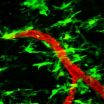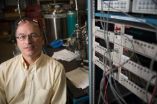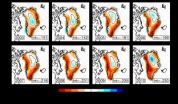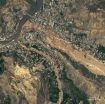(Press-News.org) UNIVERSITY PARK, Pa. -- Sibling conflict represents parents' number one concern and complaint about family life, but a new prevention program -- designed and carried out by researchers at Penn State -- demonstrates that siblings of elementary-school age can learn to get along. In doing so, they can improve their future health and well-being.
"Negative sibling relationships are strongly linked to aggressive, anti-social and delinquent behaviors, including substance use," said Mark Feinberg, research professor in the Prevention Research Center for the Promotion of Human Development. "On the other hand, positive sibling relationships are linked to all kinds of positive adjustment, including improved peer and romantic relationship quality, academic adjustment and success, and positive well being and mental health. With this program, we wanted to help siblings learn how to manage their conflicts and feel more like a team as a way to improve their well-being and avoid engaging in troublesome behaviors over time."
The researchers recruited 174 families living in both rural and urban areas to participate in the study. Each of the families had one child in the fifth grade and a second child in the second, third or fourth grade. To obtain background information about the families, the researchers collected questionnaire data from the parents, interviewed each of the siblings privately and videotaped family interactions. The team also videotaped the siblings as they planned a party together.
The team also gave a popular book on how to parent siblings to each of the families -- including those in the control and the intervention groups -- to see if the intervention would yield benefits above and beyond having access to such a parenting book.
The program -- called SIBlings Are Special (SIBS) -- was designed by Feinberg; Susan McHale, director of the Social Science Research Institute at Penn State and professor of human development; and colleagues to improve sibling and family relationships just prior to older siblings' transition to middle school, which often is marked by increased exposure to and involvement in risky behaviors. The 174 families who participated in the study were randomly assigned to take part in SIBS or to be in a control condition.
The program included a series of 12 afterschool sessions in which the researchers used games, role-playing activities, art activities and discussions to teach small groups of sibling pairs how to communicate in positive ways, how to solve problems, how to come up with win-win solutions and how to see themselves as part of a team rather than as competitors. The program also included three "family fun nights" in which the children had the opportunity to show their parents what they had been doing in the afterschool sessions.
"We found that the siblings who were exposed to the program showed more self-control and social confidence; performed better in school, according to their teachers; and showed fewer internalizing problems, such as depressive symptoms, than the siblings in the control group," said Feinberg.
Not only did the program help the siblings, it helped their parents too.
"The program helped parents use more appropriate strategies for parenting their kids," said Feinberg. "In addition, intervention mothers reported significantly fewer depressive symptoms after the program than control mothers, perhaps because their kids were doing better and they were less worried about them. No effects of the program were seen for fathers regarding depression."
The results appeared this month in the Journal of Adolescent Health.
How can the team's results be used by parents who are not involved in the study?
"We think that by encouraging siblings to feel like they're part of a team, and by giving them tools to discuss and resolve issues, parents can help their kids develop more positive relationships with each other, which can benefit everyone in the family," said Feinberg. "So, for example, if the kids are fighting over what television channel to watch or whose turn it is, we might suggest that a parent not resolve the issue for them, but instead give them just enough help so that they can calmly discuss and resolve the problem on their own. When siblings come up with their own solutions, they may be more likely to use those solutions again in the future."
Investing in more effort on the front end as a parent by helping siblings learn how to stay calm and discuss and resolve issues will pay off over time, according to Feinberg. "It's an investment in reducing your own stress and enhancing your children's well-being for the future."
INFORMATION:
The National Institute of Drug Abuse and the Children, Youth, and Family Consortium at Penn State funded this research. Other authors on the paper include Anna Solmeyer, postdoctoral scholar; Michelle Hostetler, research associate; Kari-Lyn Sakuma, research associate and curriculum development expert; Damon Jones, research assistant professor of health and human development; and co-principal investigator Susan McHale, director of the Social Science Research Institute at Penn State and professor of human development.
END
High-resolution real-time images show in mice how nerves may be damaged during the earliest stages of multiple sclerosis. The results suggest that the critical step happens when fibrinogen, a blood-clotting protein, leaks into the central nervous system and activates immune cells called microglia.
"We have shown that fibrinogen is the trigger," said Katerina Akassoglou, Ph.D., an associate investigator at the Gladstone Institute for Neurological Disease and professor of neurology at the University of California, San Francisco, and senior author of the paper published ...
The National Science Foundation is suggesting adding a bit of spice to a geophysical scientist's research recipe of rocks, water, air, space and life:
Humans.
At next month's Fall Meeting of the American Geophysical Union (AGU) a behemoth of a conference of nearly 20,000 Earth and space scientists, educators, students and policy makers, an international group of scientists will make the case for adding the human element to their research.
The International Network of Research in Coupled Human and Natural Systems – CHANS-Net – is supported by the National Science ...
LEXINGTON, Ky. (Nov. 27, 2012) -- Digoxin, a drug widely used to treat heart disease, increases the possibility of death when used by patients with a common heart rhythm problem − atrial fibrillation (AF), according to new study findings by University of Kentucky researchers. The results have been published in the prestigious European Heart Journal, and raises serious concerns about the expansive use of this long-standing heart medication in patients with AF.
UK researchers led by Dr. Samy Claude Elayi, associate professor of medicine at UK HealthCare's Gill Heart ...
LA JOLLA, CA – November 27, 2012 – Researchers at The Scripps Research Institute (TRSI) are fueling the future of cancer treatment by improving a powerful tool in disease defense: the body's immune system. By revealing a novel but widespread cell signaling process, the scientists may have found a way to manipulate an important component of the immune system into more effectively fighting disease.
The study, recently published online ahead of print by the journal Blood, shows that disabling a particular enzyme, called ItpkB, in mice improves the function of a type of immune ...
By using common materials found pretty much anywhere there is dirt, a team of Michigan State University researchers have developed a new thermoelectric material.
This is important, they said, because the vast majority of heat that is generated from, for example, a car engine, is lost through the tail pipe. It's the thermoelectric material's job to take that heat and turn it into something useful, like electricity.
The researchers, led by Donald Morelli, a professor of chemical engineering and materials science, developed the material based on natural minerals known ...
VIDEO:
Princeton University researchers developed an enhanced approach to capturing changes on the Earth's surface via satellite that could provide a more accurate account of how geographic areas change as a...
Click here for more information.
An enhanced approach to capturing changes on the Earth's surface via satellite could provide a more accurate account of how ice sheets, river basins and other geographic areas are changing as a result of natural and human factors. ...
Toronto, ON (27 November, 2012) -- A new method of growing cardiac tissue is teaching old stem cells new tricks. The discovery, which transforms aged stem cells into cells that function like much younger ones, may one day enable scientists to grow cardiac patches for damaged or diseased hearts from a patient's own stem cells—no matter what age the patient—while avoiding the threat of rejection.
Stem cell therapies involving donated bone marrow stem cells run the risk of patient rejection in a portion of the population, argues Milica Radisic, Canada Research Chair in ...
Parents may have some new motivations to serve their kids vegetables. A new Cornell University study, published in Public Health Nutrition, found that by simply serving vegetables with dinner, the main course would taste better and the preparer was perceived to be more thoughtful and attentive.
"Most parents know that vegetables are healthy, yet vegetables are served at only 23% of American dinners," said lead author Brian Wansink, PhD, the John Dyson Professor of Marketing and Consumer Behavior at Cornell University. "If parents knew that adding vegetables to the plate ...
Boulder, Colo., USA – GSA Bulletin articles posted online between 2 October and 21 November span locations such as the San Andreas fault, California; Tibet; Mongolia; Maine; the Owyhee River, Oregon; the Afar Rift, Ethiopia; Wyoming; Argentina; the Sinai Peninsula, Egypt; British Columbia; the southern Rocky Mountains; Scandinavia; and Saturn's largest moon, Titan. Topics include the "big crisis" in the history of life on Earth; the structural geology of Mount St. Helens; and the evolution of a piggyback basin.
GSA Bulletin articles published ahead of print are online ...
A NASA study using TRMM satellite data revealed that the year 2010 was a particularly bad year for landslides around the world.
A recent NASA study published in the October issue of the Journal of Hydrometeorology compared satellite rain data from NASA's Tropical Rainfall Measurement Mission (TRMM) to landslides in central eastern China, Central America and the Himalayan Arc, three regions with diverse climates and topography where rainfall-triggered landslides are frequent and destructive hazards to the local populations.
The work, led by Dalia Kirschbaum, a research ...







